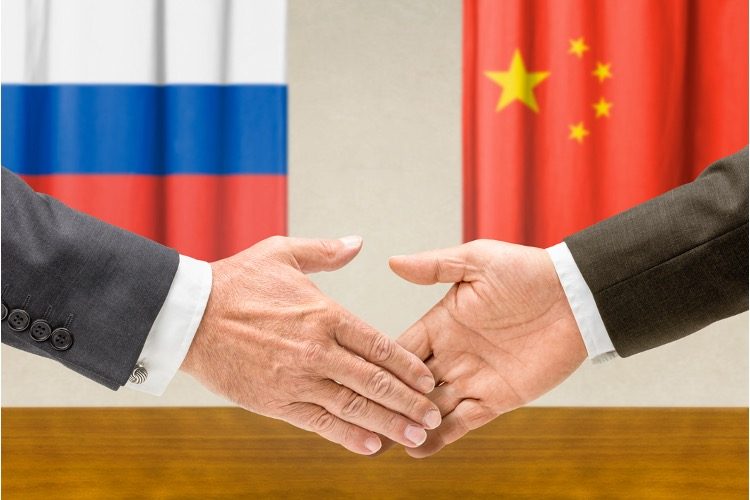
Russia surpassed Saudi Arabia to become China’s top crude oil supplier in 2023, data revealed over the weekend, as China, the world’s largest crude importer, dismissed Western sanctions to purchase huge quantities of discounted oil for its processing plants.
Last year, Russia shipped a record 107.02 million metric tons of crude oil to China, amounting to 2.14 million barrels per day (bpd), Chinese customs data revealed, far more than other key oil exporters such as Saudi Arabia and Iraq.
Conversely, imports from Saudi Arabia, hitherto China’s largest supplier, dropped 1.8 percent to 85.96 million tons, as the Middle East oil giant lost market share to the more competitively priced Russian crude.
Ostracized by many international buyers following Western sanctions over Russia’s military operation in Ukraine since February 2022, Russian crude oil traded at sizable discounts to international benchmarks for much of 2023 amid a Western-imposed price cap.
Rising demand from Chinese and Indian refiners for discounted Russian oil increased the price of Russian ESPO crude through 2023, exceeding the Group of Seven’s $60 a barrel price cap imposed in December 2022 as alternative shipping and insurance options to go around Western sanctions gained momentum.
Meanwhile, ESPO crude shipments for December 2023 were priced at a discount of around 50 cents to 20 cents per barrel under the ICE Brent benchmark, as compared to a $1 premium for October delivery cargoes and a discount of $8.50 for shipments delivered in March, as per trading sources.
Simultaneously, Saudi Arabia increased prices for its signature Arab Light from July, prompting some refiners to search for cheaper cargoes.
To support prices, Saudi Arabia and Russia, two of the world’s top three oil producers, declared their output and export cuts last year. Saudi Arabia is rolling over output cuts of one million bpd this quarter, while Russia declared that it would increase its reduction in exports this year from 300,000 bpd to 500,000 bpd.
Chinese refiners used intermediary traders to deal with shipping and insurance of Russian crude to circumvent Western sanctions.
Buyers also utilized the waters off Malaysia as a trans-shipment point for sanctioned cargoes from Iran and Venezuela. Imports tagged as originating from Malaysia mounted 53.7 percent last year.
China reported no official shipments of Venezuelan crude in December despite a loosening of U.S. sanctions on Caracas in October after a deal between President Nicolás Maduro’s administration and its political opposition.
For its part, Moscow began diversifying its energy supplies in 2022 after the EU, G7, and allies imposed an embargo on seaborne Russian oil together with a $60-per-barrel price cap on other types of crude in an effort to curtail Russian energy revenues. Similar embargoes were unveiled for exports of petroleum products. The agreed ceiling for diesel is $100 per barrel, and $45 for discounted products such as fuel oil. Consequently, Russian oil producers have rerouted supplies of East Siberian crude to Asia, and restarted transportation of crude by rail.
Last month, Russian Deputy Prime Minister Alexander Novak admitted that oil sales to the EU, once Russia’s biggest market, had fallen by 90 percent. Meanwhile, various Western officials have pointed out that oil from Russia is still entering the EU market via intermediaries at an increased price.
Russian Prime Minister Mikhail Mishustin said recently that his country has not only withstood the pressure of Western sanctions and external risks but has also managed to steer its economy toward sustainable growth.
Every sector of industry registered positive developments over the past year, the official claimed at a plenary session of the Russia EXPO event in Moscow.
“We have managed to neutralize external risks and put the economy on a trajectory of sustainable growth,” Mishustin proclaimed.
The Russian economy witnessed GDP grow of 3.3 percent in the first 11 months of 2023, the prime minister elaborated, citing preliminary estimates. He further stated that manufacturing increased by 7.5 percent in the same period.
Mishustin credited these results to the implementation of Russian President Vladimir Putin’s economic strategy and the efforts of the Russian government.
Previously, Putin predicted that Russia’s GDP may have grown by more than the previously estimated 3.5 percent in 2023, stating it was an “amazing” success given that the country has had to operate under current Western sanctions.
Russia’s electric power usage increased 1.4 percent in 2023 versus the previous year, surpassing 1.121 trillion kilowatt hours, recent data released by the Russian Power System Operator divulged.
Demand rose in all regional networks, but especially in the Far East, Siberia, and the south. The overall increase was reportedly sparked by a rise in consumption from machine builders and metals factories, Russian Railways, and the southern ports.
Electricity consumption in Siberia and the Far East increased due to major investment projects by metals firms, rail infrastructure development, and intensified trade links with China, as claimed by Sergey Sasim, director of Institute of Economics and Utility Regulation at HSE, and cited by Kommersant.
Sasim added that increased activity in Russia’s military-industrial complex and higher household consumption also contributed to the power demand surge in the regions.
Demand was also driven by a rise in manufacturing, particularly mechanical engineering and metalworking, Aleksey Fadeev, head of special projects at the Institute for Natural Monopolies Research, said.
Based on data monitored by Rosstat, production in manufacturing industries over the first 11 months of 2023 saw a year-on-year rise of 7.5 percent.
Southern regions have witnessed increased rates of consumption for the past few years, up by a quarter in 2016–2023, according to Fadeev, who cited population growth, and the development of the agricultural sector, industry, and transport.
Electricity production rose along with the demand surge in 2023, the report indicated. The figures were enhanced after the destruction of the Kakhovka hydroelectric dam in the Kherson region, which caused an increase in supplies to four former Ukrainian territories that joined Russia in 2022.



